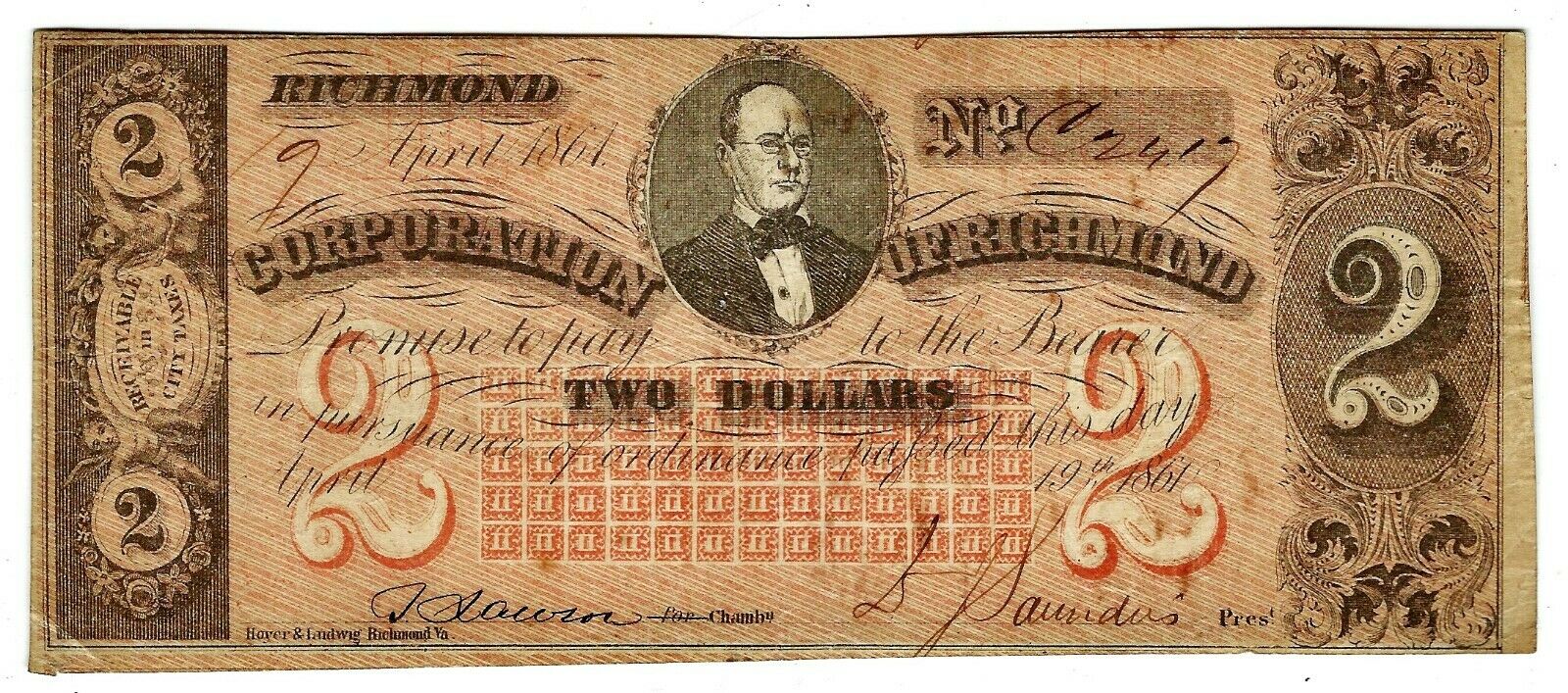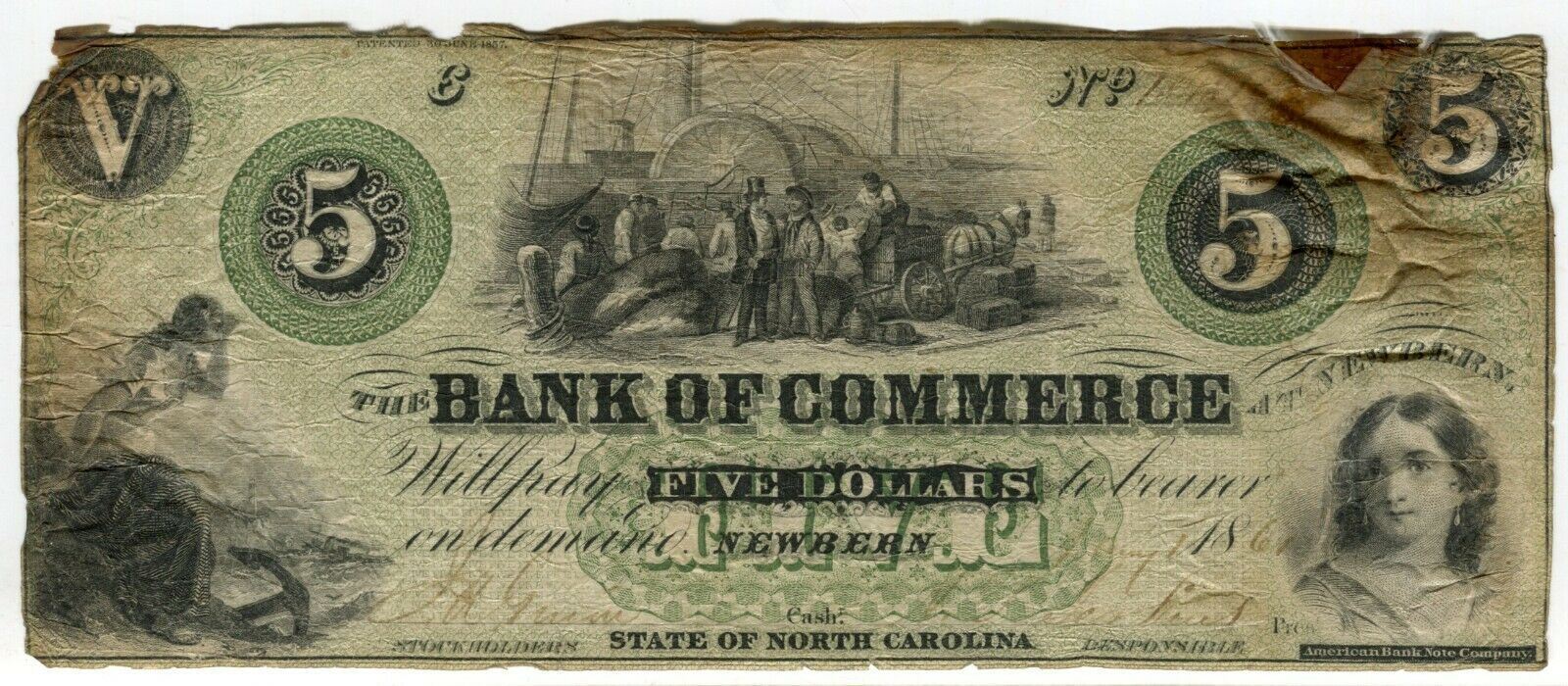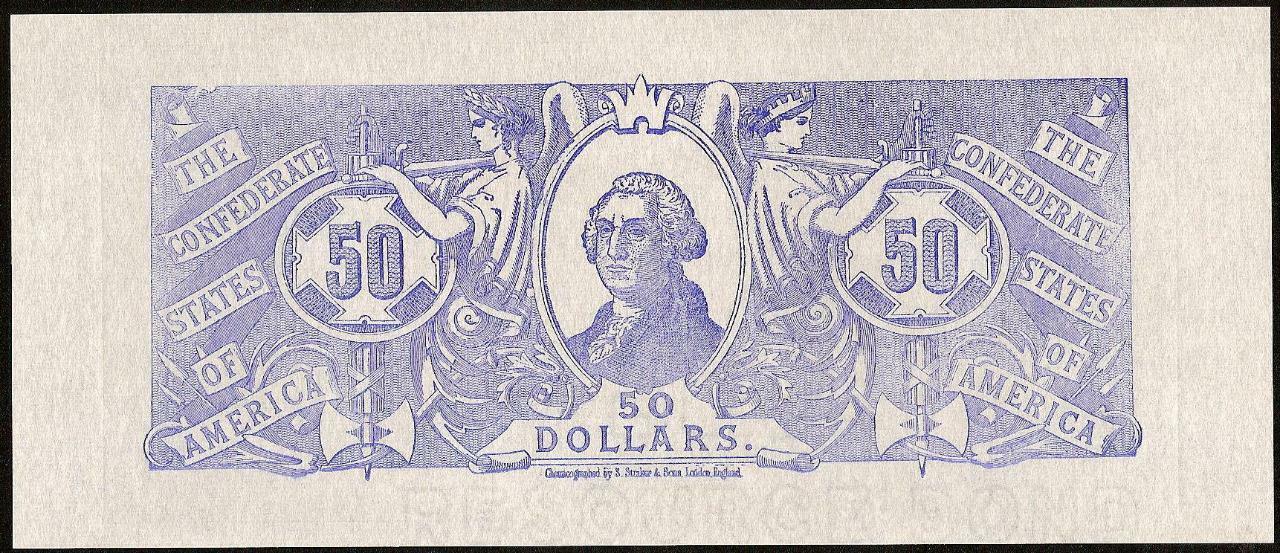-40%
T-58 PF-21 1863 Confederate Paper Money - PMG About Uncirculated 53!
$ 120.91
- Description
- Size Guide
Description
T-58 PF-21 .00 CSA Currency.State capitol in Nashville, Tennessee. Alexander Stephens to the right. 2nd Series. Printed on plain paper. Serial number 161395. Plen G.
PMG About Uncirculated 53! Typical for the grade.
Genuine.
The T-58 has an ornate back. It is found on plain paper as well as watermarked paper, as the supply had increased by this time to include some of these middle denomination bills. On the and below, the serial numbers were hand written except for a trial run on the T-58 using machine printed numbers on the extremely rare T-58 PF-6. The notes were not as important to reduce the probability of counterfeiting, so the Confederacy used its scarce watermarked paper on the higher denomination s and 0s. No known T-58 contemporary counterfeit exists.
The center of the note features the state capitol of Tennessee in Nashville. Alexander Stephens, the Vice President of the Confederacy, is shown at the lower right. The reverse is ornate with the denomination. This note was payable two years after the ratification of a Treaty of Peace between the Confederate States and United States. It also was receivable for all dues except export dues and fundable in 6% bonds within 12 months of issue.
This type comes on high quality bank note paper. There are numerous rarities and oddities within T-58 making it a fascinating type to study and collect by variety. Notable rarities include the T-58 PF-7 through PF-11 varieties including one that Criswell omitted on plain paper. There is a major A-E plate letter error as well as numerous notes with periods and plate states, etc. Interestingly, there are a few T-58 PF-4 and PF-12 with fake periods on them that were in the Browne collection. Apparently, an unscrupulous individual made these for Browne as he was, according to Dr. Ball, “an easy one to fall for such a ruse”.
Inverted back T-58s are extremely rare. This type is common in most grades except uncut Choice Extremely Fine to Uncirculated.
A note about 3rd party grading. PCGS and PMG do a good job putting a floor on quality within a grade range and have become proficient in detecting repairs (though occasionally they miss something, or see something that is not there, as we all can).
Notes housed in Net or Apparent holders have a wide range of quality from very nice (in rare cases may be nearly choice) to dogs with major problems, so each needs to be evaluated on their own.
However, PMG and PCGS focus on technical grading due to circulation and damage and do not have a mechanism for evaluating condition or eye appeal - whether a note is average, better than average, choice or gem for the grade based on its color, trim and margins. The exception to this are slabbed notes of New or Uncirculated grades to some degree. This is important as Very Fine, Extremely Fine or AU notes can have a wide range of values depending on these factors not reflected in the slab grade. A fully framed Confederate or obsolete note is worth considerably to a lot more than one that is trimmed into the margin for the same grade. Likewise, color is important. These factors can affect the value of a note by 50%, 2-1 or even 3-1, e.g., an AU 58 (PPQ or not) T-20 1861 CSA note trimmed into the margin is worth between 0 and 0. The same grade, AU 58 (PPQ or not), with a full frame and good color/inking is worth something like 0 to 00 depending on eye appeal. I will continue to use the terms plus for above average, choice and gem to mean varying degrees of superiority of condition and eye appeal of a note within a grade as documented in my book which is based on what collectors seek out and pay premiums for.
In coins, we’ve seen the third party graders add things like full bell lines, full head, full bands which reflected the market. I’d expect either the grading services or another party to do the same for paper money. If you are just buying the number on the holder for the best price, you may well be buying low end notes for the grade!
Pierre Fricke. Immediate Past President of the Society of Paper Money Collectors; Professional Numismatists Guild (PNG); Professional Currency Dealers Association (PCDA); ANA, EAC, etc...
BuyVintageMoney.
Author of the standard guide book to Confederate money - Collecting Confederate Money Field Edition 2014.
Free shipping and insurance.
eBay has announced that it will start to collect sales tax on behalf of sellers for items shipped to customers in Alabama (Jul 1), Connecticut (Apr 1), Iowa (Feb 1), Minnesota (Jan 1), New Jersey (May 1), Oklahoma (Jul 1), Pennsylvania (Jul 1), and Washington (Jan 1). Additional states are being added like Idaho and more than 20 others. This is the new internet tax out of the US Supreme Court Wayfair decision. Buyers are responsible for paying this sales tax.
See eBay information for list of states eBay charges this tax payable by buyers to eBay as part of eBay invoices -- https://www.ebay.com/help/selling/fees-credits-invoices/taxes-import-charges?id=4121#section4










